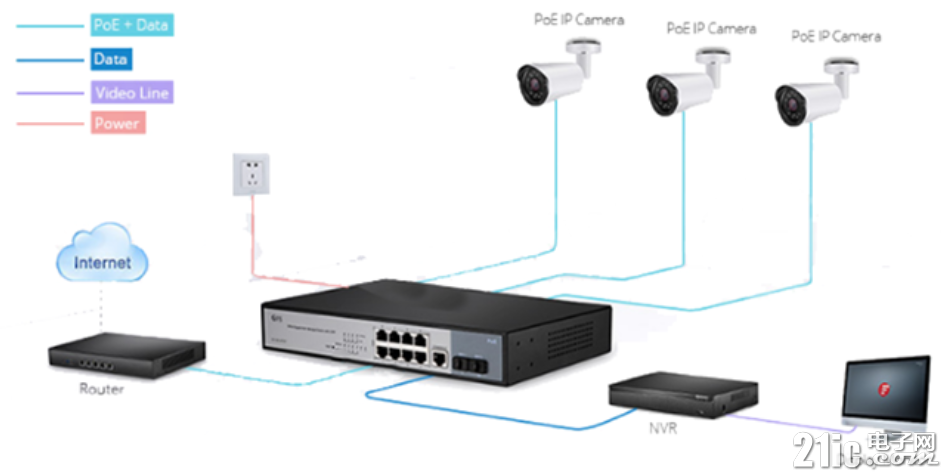Where can IP cameras be used? How to Deploy IP Cameras with PoE Switches
Application Scenarios for Deploying IP Surveillance Cameras on PoE Switches
Using PoE switches to deploy IP cameras can save time and network costs; at the same time, the installation position of IP cameras is not limited by power sockets, making installation more flexible and convenient. Based on this, the cooperation mode of PoE switch and IP camera is widely used in all walks of life, such as home security monitoring to help users monitor property safety; traffic monitoring can remotely monitor the safety of railway stations, highways, and airports; industrial monitoring can monitor the production process , warehouse management, etc. So, how to deploy IP cameras with PoE switches? This question will be answered later.
How to deploy IP surveillance cameras on PoE switches?
No matter which type of PoE switch or IP camera you choose, the connection method and usage are basically the same. You can purchase the required monitoring equipment according to actual needs and install them in different locations. Taking the application of home security monitoring as an example, the connection steps of the PoE switch and the IP camera are explained in detail.
1. Prepare the installation tools
Ready to install camera accessories, pliers, screwdriver, camera, camera charger, camera bracket, chassis, crystal head, net clamp.
2. Determine the installation location of the IP camera
In general home networks, the installation height of IP cameras should not be too low to prevent accidental damage. Can’t be too high for maintenance. Therefore, it is recommended that the indoor installation height be higher than 2.5 meters, and the distance between the IP camera and the PoE switch should be controlled within 100 meters. Fix the prepared camera on the bracket. When installing, it is necessary to avoid strong light to avoid the phenomenon of being too bright.
3. Install a fixed IP camera
After the installation location is determined, drill holes in the location to install the IP camera. Make sure the IP camera bracket is firm and stable on the wall to prevent the screen from shaking, and adjust the IP camera angle appropriately to obtain the best monitoring angle.
4. Determine the installation location of the network cable used to connect the IP camera.
After the installation position of the IP camera is determined, drill holes in a suitable position nearby, and pre-embed the position of the network cable interface. If an IP camera needs to be installed on the second or third floor, consider using an optimal routing scheme where the distance from the installation point to the nearest network access point is the shortest.
5. Connect the IP camera to the PoE switch
After completing the first three steps, you need to connect your home IP surveillance system device. A complete IP surveillance system usually consists of PoE switches, IP cameras, network video recorders (NVR), and surveillance display devices (such as computers, TVs, etc.). ) and Ethernet cable. The following figure is an example:

Plug the power cord into the power socket of the PoE switch and turn it on;
Connect the PoE switch and router with an Ethernet cable to ensure that the switch can access the Internet;
Use an Ethernet cable to connect the IP camera to the PoE port of the PoE switch; the PoE switch supplies power to the IP camera and transmits data through the Ethernet cable;
Use Ethernet cable to connect PoE switch and NVR, use VGA or HDMI high-definition cable to connect NVR and monitor display device. Please pay attention to the corresponding interface when connecting.
6. IP camera system debugging
Next, you need to debug the device. First, the host needs to activate and you will be prompted to set a password. After the password is set, find the configured network configuration and set the IP address. After the IP setting is completed, find the channel management, and you will find the inactive device. Under normal circumstances, click activation directly to add successfully.
Of course, due to different brands of equipment installation, there will be similar differences, and some parts of the operation interface are different. You need to study more, or directly consult the manufacturer to guide debugging.